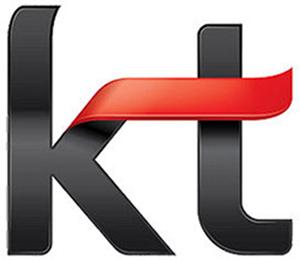Korean Telco Plans Commercial NFC Launch with Samsung Phones

SINGAPORE – South Korean mobile operator KT Corp. plans to launch NFC services in mid-October with more than 50,000 Samsung phones and intends to add an NFC smartphone model from LG Electronics in March supporting the Android operating system, KT’s Eun-Seok Kim disclosed today.
KT’s larger rival, SK Telecom, is expected to follow with a smaller NFC launch later in October using the same Samsung feature phones, and is also expected to expand early next year, probably with the LG smartphone model
The KT launch next month, which would include retail payment, transit-ticketing, banking and loyalty applications stored on SIM cards, would probably qualify as world’s first commercial launch of NFC services. As reported by NFC Times in March, Kim, deputy director for the m-financial business team at KT, had originally projected the project would launch in September with a possible 300,000 phones.
But Kim, who spoke today at the Near Field Communication World Asia 2010 conference in Singapore, told NFC Times that he doubted mobile operators elsewhere could order the same NFC phone models from Samsung and LG. That is especially true of the first phone, the Samsung SHW-A170K, a feature phone that supports South Korea’s mobile phone software standard, WIPI.
“This handset is made for only the Korean market,” he told NFC Times after his presentation.
Kim didn’t know the likely model of the LG Android phone or how many the telco would order. But he said it would also be customized for the Korean market. He added that local Korean handset makers KT Tech and Pantech likely would also produce NFC models.
All the phones, however, would support the international NFC standard, including the single-wire protocol connection between the NFC chips and SIM cards.
When asked why Samsung was not also producing an NFC smartphone model for the launch, Kim speculated the South Korea-based handset maker is still evaluating the market prospects for NFC. He considers the Samsung SHW-A170K as more of a “pilot” NFC model than one the phone maker plans to distribute widely.
But Samsung and LG, also based in South Korea, along with other phone makers, such as Taiwan-based HTC, are believed to be planning to introduce Android handsets supporting NFC next year for international markets. Others, such as Nokia and BlackBerry maker Research in Motion and possibly Apple are also expected to offer NFC models next year.
The Korean telcos plan to issue high-capacity SIM cards with and without NFC phones next year. Kim said KT’s tentative plans call for issuing 1-gigabyte SIMs that would work in NFC phones. SK Telecom also has talked about distributing giga-SIMs, though not necessarily for NFC phones. Korean SIM suppliers Solacia and later KEBTechnology are expected to develop the high-capacity SIMs, along with France-based Gemalto. SIMs issued for the NFC launch next month would carry much less memory though still more than standard SIMs, probably 768 kilobytes, Kim told NFC Times.
The NFC phones and high-capacity SIMs would replace nonstandard dual-interface SIM cards SK Telecom and KT have been issuing for about three years to carry the mobile-payment, transit, loyalty and banking applications. The applications can be downloaded and managed over the air and that will continue to be the case for the SWP-enabled SIMs in the NFC phones.
The current dual-interface or “combi” SIMs hook into antennas in specially equipped mobile phones and carry the popular T-money transit stored-value application in the capital Seoul, along with little-used mobile-credit card applications supporting Visa payWave and MasterCard PayPass. They also store a membership-loyalty program and mobile-banking services that enable subscribers to make contactless withdrawals from ATMs and to trade stock.
Between them, the two telcos count about 1.5 million subscribers who use T-money on the contactless-mobile phones. The application also can be used for purchases in some retail stores. The mobile credit card service can be used in 140,000 stores, though the telcos and banks that issue the payWave and PayPass applications have not been successful in encouraging subscribers to tap to pay with their phones at the point of sale.
KT by itself has 800,000 mobile-banking subscribers, who do network-based balance checking and money transfers and contactless ATM withdrawals, paying a US$1 per month fee for the m-banking service. And about 100,000 KT subscribers tap their phones on readers for the telco’s points program with partner merchants.
With the gigabyte of flash memory that might be available on the SIMs next year, Kim earlier told NFC Times the telco believes it can sell subscribers entertainment-type content, which the subscribers could “pre-experience,” before buying.
And with NFC, the telco could introduce some tag-reading and peer-to-peer features, such as enabling subscribers to download content by tapping their phones to RFID tags in smart posters. That taps would automatically open a mobile-Internet connection
KT, Korea’s No. 2 telco, has been more active with NFC than SK Telecom, which has been heavily invested in the dual-interface SIMs and associated infrastructure.
KT, then known as KTF, took the lead in a series of “pay-buy mobile” NFC trials backed by mobile operator trade group the GSM Association. KTF launched its trial in late 2007, putting a MasterCard PayPass application onto a SIM card.
Kim told the Near Field Communication World Asia conference today that the planned NFC project next month is a “real commercial (launch), not a trial."












